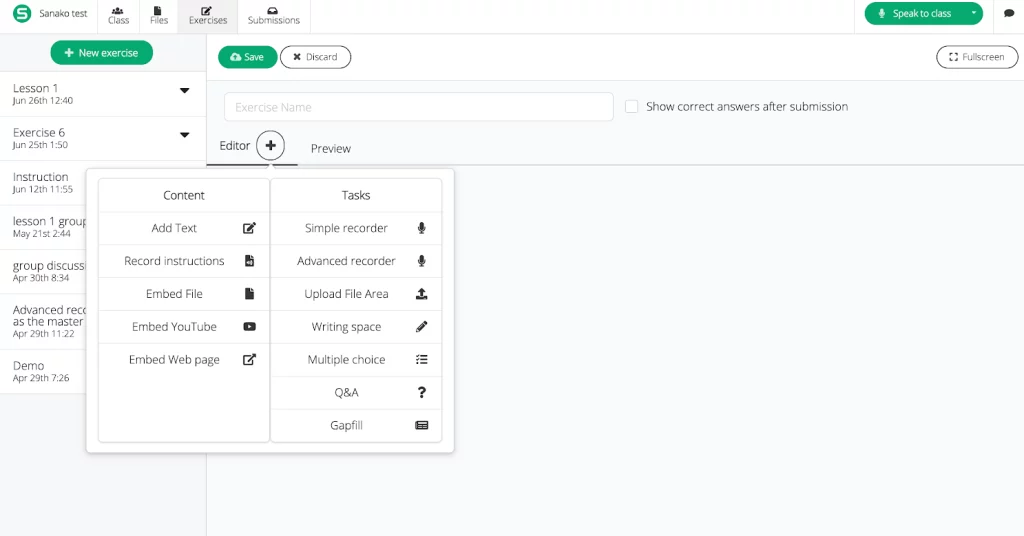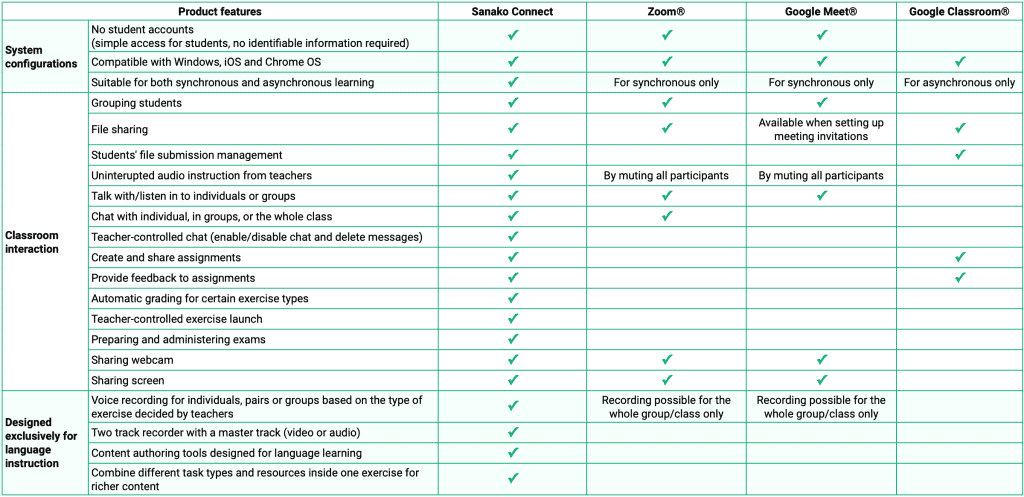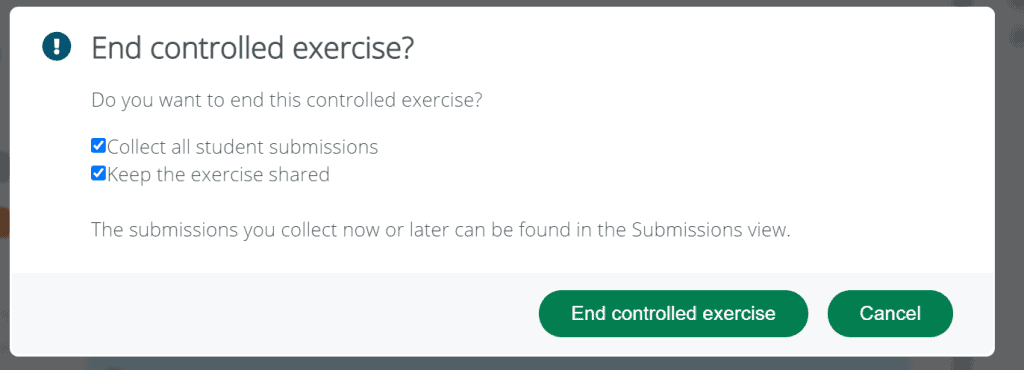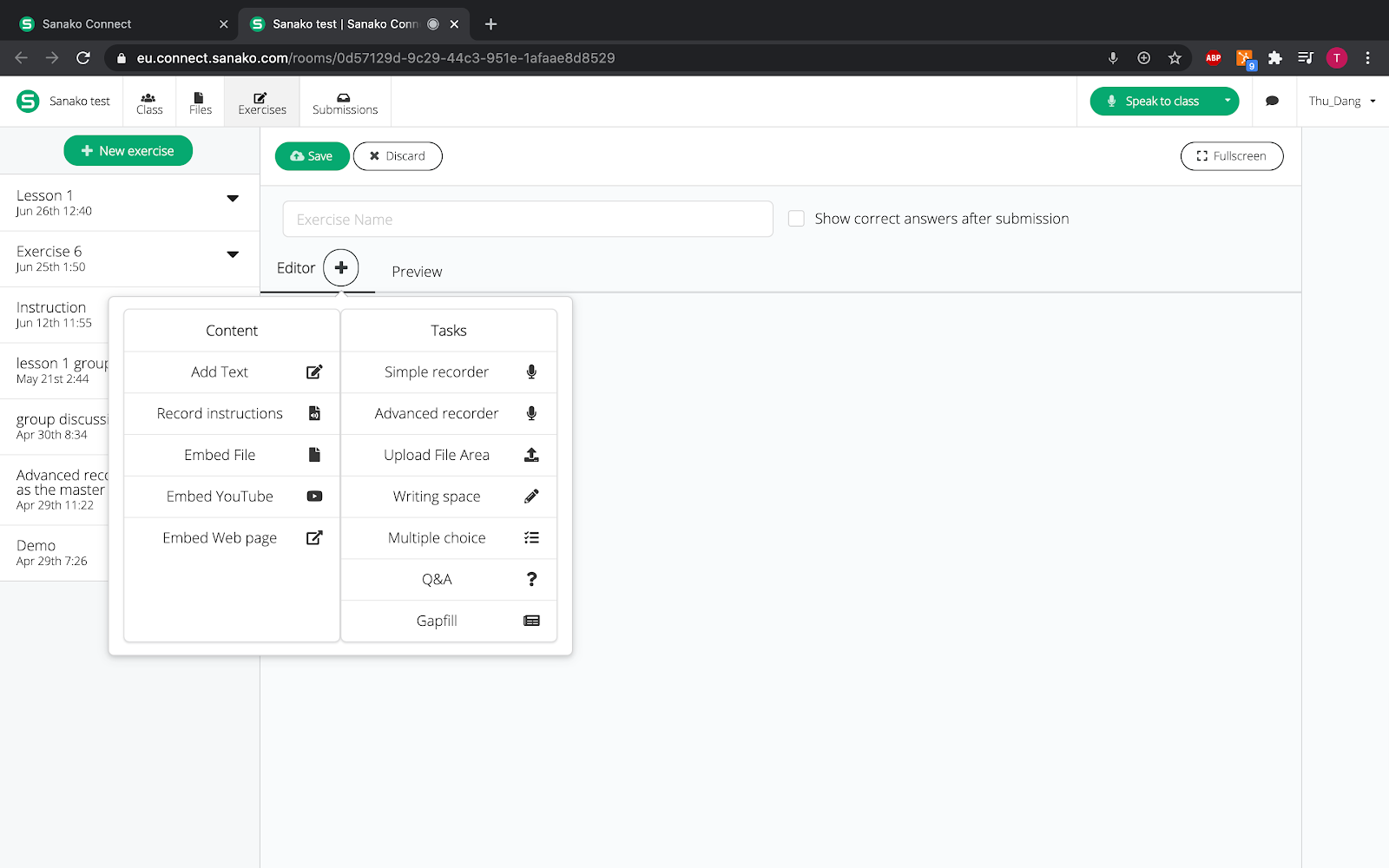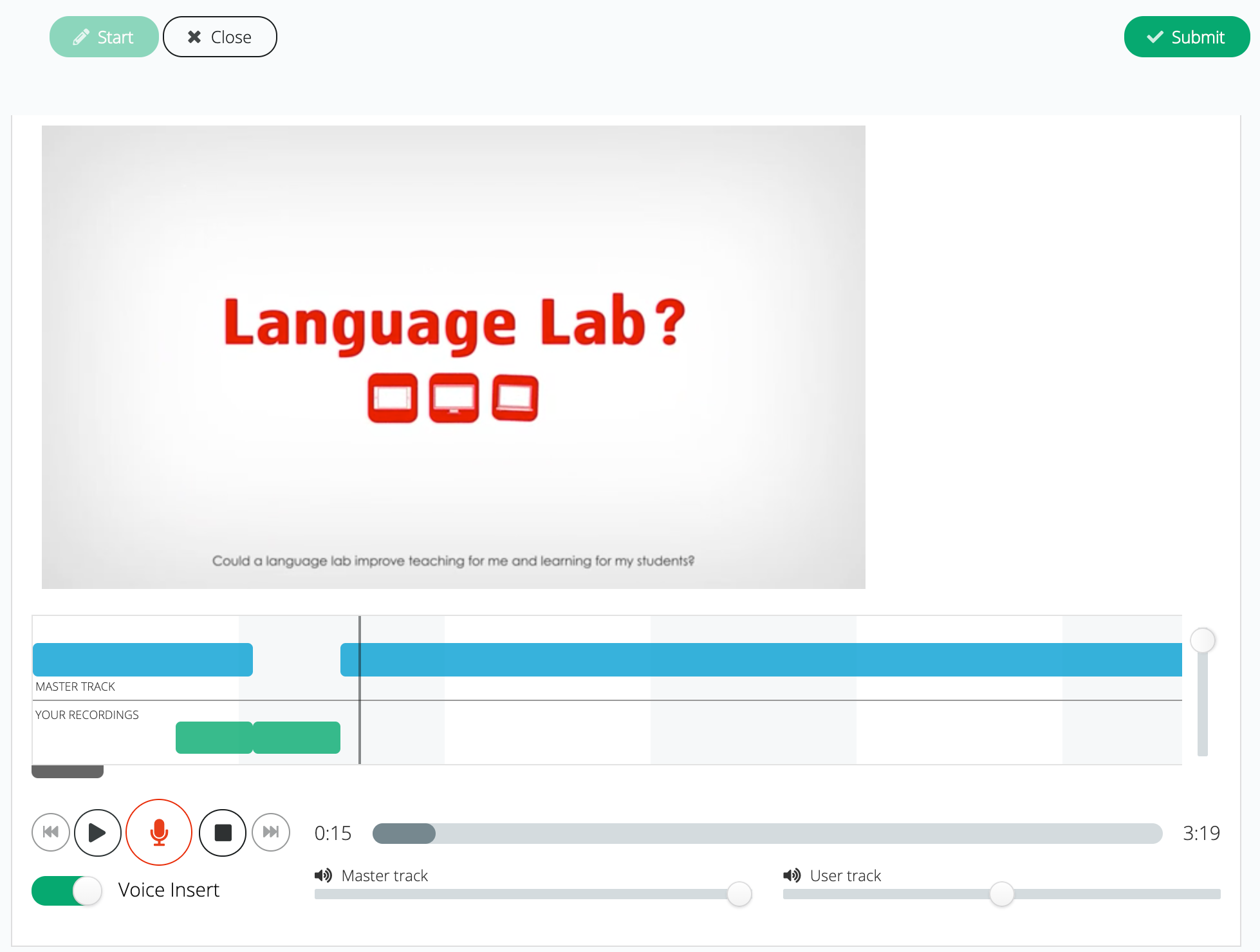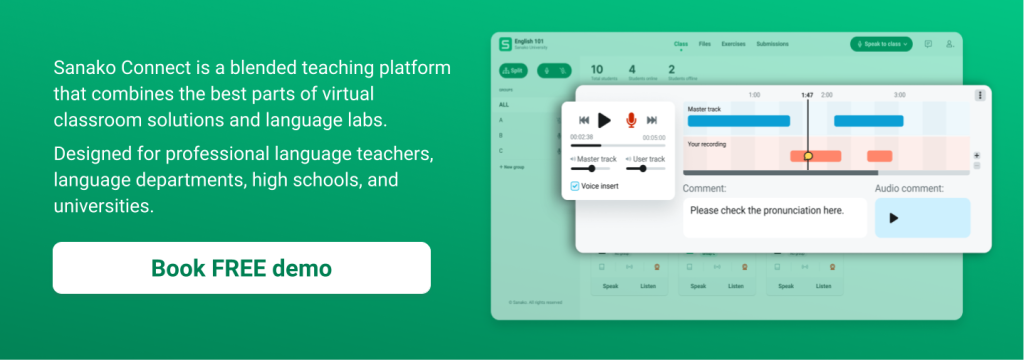Individual learners around the world have been familiar with acquiring a language online using solutions such as Duo-lingo®, Babbel® or Memrise® for many years already. However, when Covid-19 outbreak started and affected us all, giving formal language classes online did not appear to be as easy a transition as one might think as most generalist virtual classroom solutions miss many critical features required by language teachers. Fortunately, there are now virtual classroom solutions available that are dedicated for language teaching and this makes online and in classroom language teaching easier than ever!
Zoom®, Google Meet® and Google Classroom® are among the most widely known virtual classroom solutions or online teaching platforms currently. Nonetheless, we have seen many language teachers to struggle with these solutions as they are not optimized for teaching languages. In this blog post, we will discuss how these generalist virtual classroom tools differ from a specialized language teaching platform like Sanako Connect? Read on and find out which virtual classroom platform we think is the best for teaching languages.
Does your virtual classroom software allow for synchronous and asynchronous teaching?
There are two main ways of delivering language teaching to students in online environment. The first one is teaching in real-time when the teacher and students are all online at the same time. This is called synchronous teaching. The second one is when lesson materials are delivered to students even if the teacher is not online, and students can then learn on their own pace (this is called asynchronous teaching). Zoom® and Google Meet® are suitable for the former teaching type while Google Classroom® is better when it comes to the asynchronous teaching mode.
General video-conferencing solutions like Zoom® and Google Meet® are particularly strong tools for synchronous teaching. Students and teachers can easily see each other, communicate both verbally and via chat in real-time. Sharing a teacher’s screen is a really good way to show materials or present to students. Nevertheless, once a teacher wants to share different types activities or files to the class, it can be a bit harder.
If you are using Zoom®, you need to go to their settings to actually allow file transfer. In Google Meet®, you can mostly share files when preparing the meeting invitation. Of course, during the call, you can share the links for content you have uploaded on other online file sharing platforms. The sharing part might be easy this way but it usually leads to chaos for teachers as they want to manage and reuse the files and student submissions as well.
Does the virtual classroom solution include file/content management features?
When using a general virtual classroom software, after several classes, the management of the files you have shared may be quite challenging as files are not stored on the system so it might be hard to track the files you have shared with the class. Often you will have to use an external file management system to organize materials you have shared. The reason is Zoom® and Google Meet® are designed solely for synchronous online meetings rather than for asynchronous teaching where longer-term file storage and content management is an essential part of the learning and teaching process.
If you are an independent language teacher that normally teaches one-on-one classes or have only a few students in your class, you can manage quite well using Zoom® and Google Meet®. If you are teaching in a formal school or university and have a bigger class, combining these tools with a learning management system is necessary to keep your workload manageable. This is when Google Classroom® comes in as an effective solution.
Google Classroom® allows teachers to not only share files and exercises with students but also collect their submissions in an orderly fashion. Teachers can also grade and edit documents conveniently inside the learning management platform. It might be even more convenient if all students and teachers use Google Suite tools together. Notwithstanding, Google Classroom® has its own limits for materials creation, especially for language teaching. This leads us to discuss one of the most commonly required features for any virtual classroom software by language teachers, the content authoring tools.
Can you create language teaching materials and activities inside the virtual classroom?
If you look at dedicated online language teaching platforms, you’ll notice that it’s the actual interaction of the students with the learning activities that affect the effectiveness of the learning process. The more engaging the content, the more students are willing and motivated to learn the target language. Keeping students engaged has always been a problem teachers need to solve in both traditional classroom settings and now also with online language classes.
Although online language learning tools like Duolingo® or Babbel® can have really good and engaging content for learners, they are all pre-made and teachers cannot really modify or decide which one can be used in their classes exclusively. These products are meant for self-study when one wants to learn a language but they are not made for language teachers to create content to be delivered to their students.
When implementing Zoom®, Google Meet® or Google Classroom® to teach languages, teachers often create materials from Microsoft Office Suite such as Powerpoint presentations or Word documents to share with students. In the case of Google Classroom®, it is actually convenient to use Google Docs or Slides instead. One good point is that teachers can provide feedback on students’ work by commenting directly on the material.
Still, since it is not an online teaching platform tailored especially for language teaching, Google Classroom® offers limited selection for teachers to create engaging content and exercises meant for language learning. The case is actually no better for Zoom® and Google Meet®. Teachers have to find other solutions for this. Many have to rely on external resources to create quizzes or flashcards for students to learn the language better. These types of solutions may help with learning vocabulary, grammar or even listening skills but they do very little in improving students’ pronunciation or speaking skills.
To improve one’s pronunciation, self recording and listening back to one’s own pronunciation is a widely known tip for language learners. In Zoom® or Google Meet®, one will be able to record the whole call. In Zoom®, a host or a teacher can easily initiate the recording, either for it to be saved on cloud or locally into the device’s memory. Others in the call can also start this function as well by placing a request to be approved by the host.
However, recording the whole class can be hard for review later, especially if it’s a long session. Another problem is that collecting individual recordings can turn into a very burdensome procedure for the teacher. Thus, with solutions not specialized in language teaching, users might need to be really patient and also hard-working to cope with all the limitations.
Grouping and pairing students in the virtual classroom
A very common activity in language classes is pair or group discussions. Google Classroom® obviously cannot be used for this. And if you don’t know it yet, it’s actually possible to divide people inside Zoom® and Google Meet® using what is called the Breakout rooms.
With breakout rooms these virtual classroom tools can be used for dividing a bigger class into small groups or student pairs. If your focus is mostly interaction among participants and less on the classroom management and exercise execution, Zoom® or Google Meet® can be a rather good choice in this sense for online language teaching.
(Read also our other blog post about the benefits a virtual classroom brings for teachers when teaching online.)
What are the 3 biggest advantages of a specialized virtual classroom software like Sanako Connect over these generalist tools?
Sanako Connect includes a balanced combination of all the different elements and features to support language teaching and learning, both in a classroom setting and also in the online environment.
How can we claim this? Let’s explore Sanako Connect – Sanako’s next generation virtual classroom product inheriting knowledge from our 60 years of experience in delivering language labs and language teaching software to institutions around the world. For a quick comparison with other solutions, please refer to the table below:
Advantage 1: A teacher-led virtual classroom environment
Operating a language class online can be challenging at times, especially when there are many students attending at once. Imagining having a group meeting with 20 or more people, more often there may be noises that interfere with the meeting, or simply because when you’re online, it’s more difficult to take the cue when one can speak without interrupting others. This is true even for a normal remote meeting, however, operating a live language class online with students can be even more difficult.
This is why Sanako Connect’s approach is prioritizing the role of the teacher as the one leading the teaching session and being always in full control. Inside Sanako Connect, teachers can easily provide uninterrupted guidance to the whole class at once as well as delete any inappropriate content shared by mischievous students. Moreover, the teacher is kept informed of their students’ statuses, whether they are working on an assignment, recording themselves, or discussing in a group with others. The teacher can then decide to provide help if needed at any time through either audio or chat as the communication channel. Besides these, there is another feature dedicated to give the teacher a full control over the class – the forced launch of an activity and the forded collection of any exercise or task. This function is especially useful for administering quizzes and tests online on the platform.
Advantage 2: Create rich content and activities designed for language teaching inside the virtual classroom
As mentioned above, other virtual classroom platforms provide limited choice to content and exercise creation. Sanako Connect, on the other hand, has multiple elements that can be used for creating an engaging language lesson. For sharing content or instructions, a teacher can use either text, recorded audio of his/her voice or other multimedia elements such as different types of files, videos or even embed different websites into the lesson plan. For creating tasks that require interaction and input from students, Sanako Connect offers several activity options that can be mixed and matched freely according to the teacher’s needs and wants.
Example task types designed for language teaching inside the Sanako Connect are Simple and Advanced recorder, which initiate the recording of a student’s voice. This is a distinct characteristic belonging to language labs that helps students to have more speaking time and teachers to access students’ recordings easily to listen to their pronunciation more closely.
The Simple recorder contains only one track to record either students’ practice individually or in pairs and groups. The Advanced recorder, as illustrated in the picture below, includes two tracks: one for the original audio and one for the student’s voice.
Advantage 3: Synchronous and asynchronous teaching in the same virtual classroom
Sanako Connect is designed to make it easily accessible for both students and teachers in different teaching scenarios. The solution is unique as it enables both synchronous and asynchronous teaching in one platform. This means that teachers can deliver the lesson and content to students both in real-time or allow students to access the lesson materials and activities at their own time and pace. If we think about it, Zoom® and Google Meet® are nice online tools to move the normal class to online but they are not meant for moving the language class online. And that is the big difference: Sanako Connect instead enables the language teacher to move their language lab online and deliver the most effective language teaching activities possible in a virtual environment.
Conclusion: What is the best virtual classroom for language teaching?
Furthermore, Sanako Connect online teaching platform is browser-based, unlike many other specialized software for language teachers, which makes it compatible with a wide variety of operating systems and devices. Students can interact with Sanako Connect’s rich content and virtual classes on either laptops, chrome books, smartphones or tablets at their homes or in the classroom, acquiring language skills at their comfort.
In addition, as students’ privacy is becoming increasingly important in a lot of countries, Sanako Connect is the right product to erase this concern for schools, especially when moving classes online. One apparent characteristic that differentiates Sanako Connect from other virtual classroom solutions is that it requires no account creation from students. Students will be able to access a learning session simply by clicking a link shared by the teacher (or scanning a lesson specific QR-code) without having to create an account using their email address.
Considering all points discussed above, Sanako Connect might be the most suitable option when one wants to look for an online language teaching platform for their school or university.
Disclaimer: Sanako is not affiliated with the other brands or products mentioned in this article in anyway. All the trademarks related to their brands and products are owned by the corresponding brand in question. This article and the comparison between these products was based on the publicly available information when the article was published in 9th of September 2020 (with some edits done in November 2022). Note that all of these products are constantly developed, so refer to each company and product for the most recent and accurate product specifications.
Book a FREE remote demo to see Sanako Connect, our dedicated virtual classroom software for language teachers, in action!
